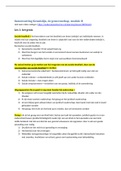Summary
Full summary of AQA GCSE PE
- Institution
- GCSE
Everything you'll need for the GCSE PE theory exam- all the sports, bodily functions, muscles, chemical processes etc. that can come up are covered. If you have these notes, you're guaranteed to ace the theory exam!
[Show more]




